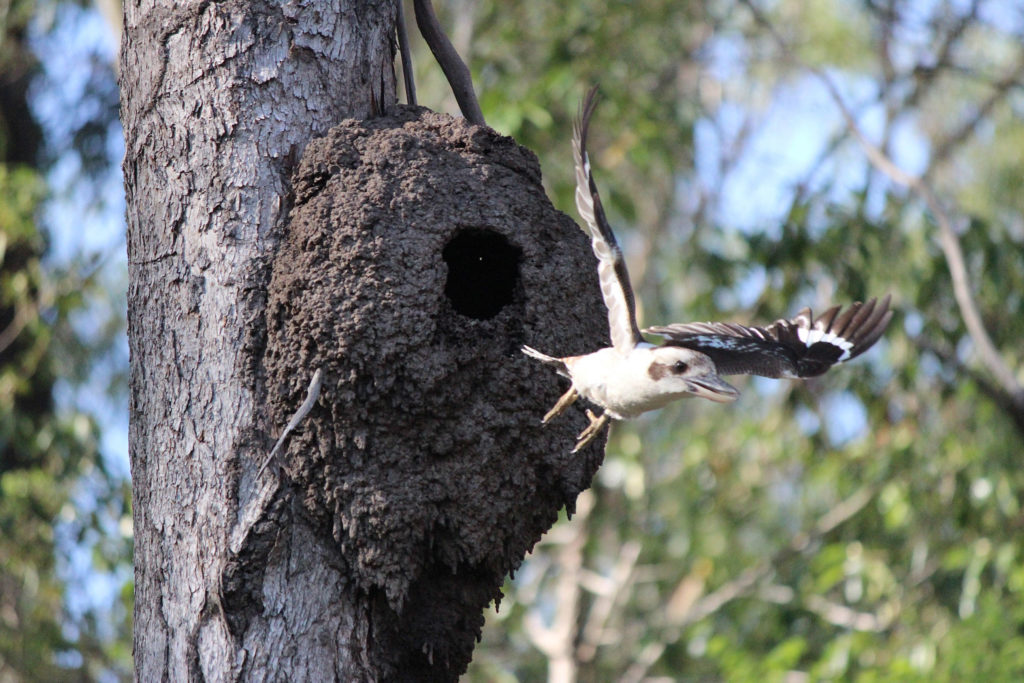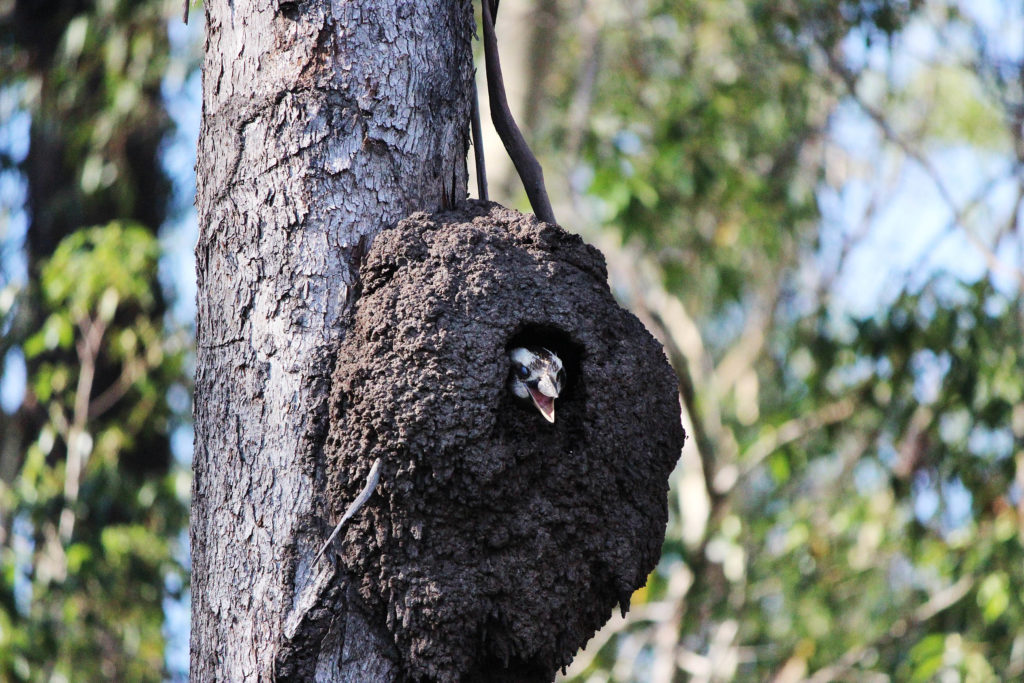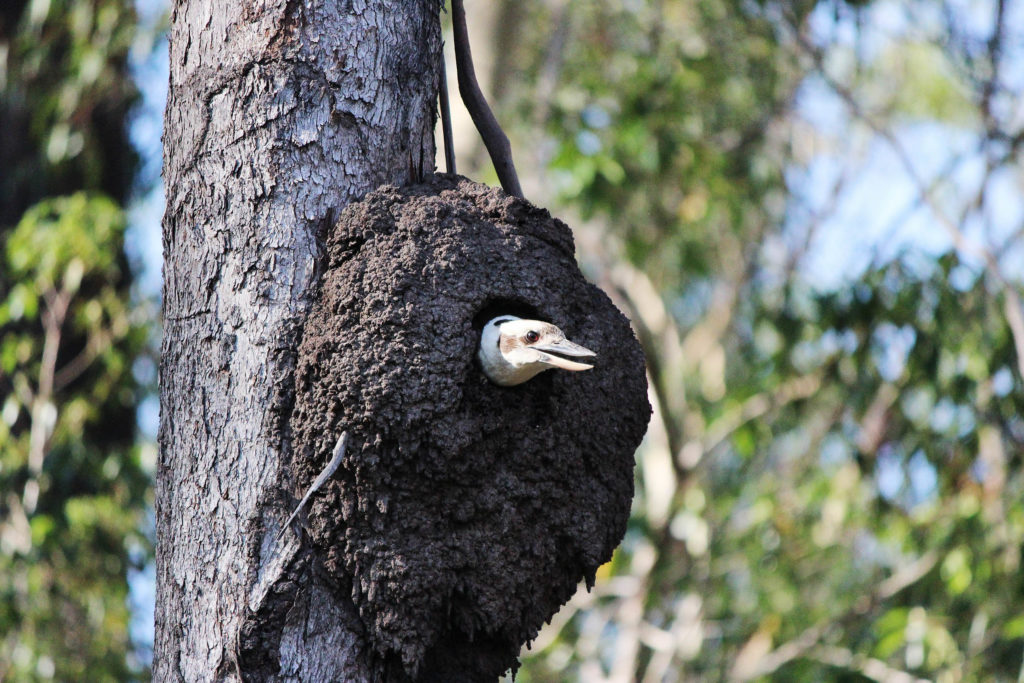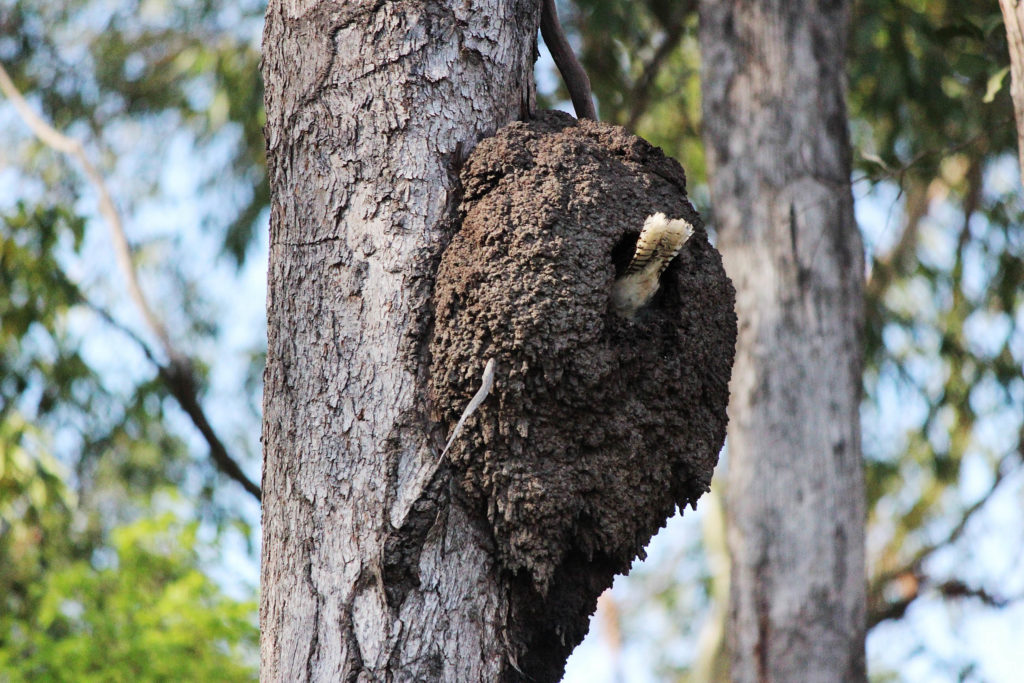
A kookaburra was captured on film at Childers this week swapping its bird nest for a termite nest in a tree.
It seems this kookaburra certainly was merry as a king, taking over the termite premises to call it his own.
Bundaberg Regional Council zoo coordinator and lover of wildlife David Flack said while he personally hadn’t seen a kookaburra nesting in an arboreal termite mound, it was actually quite common practice.
“I have seen evidence of nesting in many arboreal termite mounds in the region,” David said.
“Kookaburras are a member of the kingfisher family of which many species breed in tree hollows, burrow in embankments or excavate holes in arboreal termite mounds.”
He said as well as kookaburras and other kingfishers, some parrot species such as the hooded parrot, found in the Northern Territory, and the extinct paradise parrot were also known to use termite nests.
“By nesting in termite mounds that are well off the ground, a greater degree of protection is provided from predators such as goannas invading the nests to prey on the eggs or chicks,” he said.

Perched high in the tree the termite mound offers a safe home for kookaburras 
The kookaburra enjoying the view from the termite mound 
The kookaburra shakes a tail feather in its new digs
While this Childers arboreal termite nest might have made a nice home for this kookaburra, David said they often came in handy for other native animals.
“Termite mounds are commonly used by lace monitors to incubate their eggs in,” he said.
“Echidnas are well known for busting open terrestrial termite mounds with their powerful claws to prey on the termites inside.
“Many other animals consume termites or their eggs including lizards such as geckoes, frogs, and blind snakes.”
- Other news: More room for emus after zoo upgrade





Yes we have had Kookaburras nesting in a termite nest in the river bush land in Murrumba downs Qld.